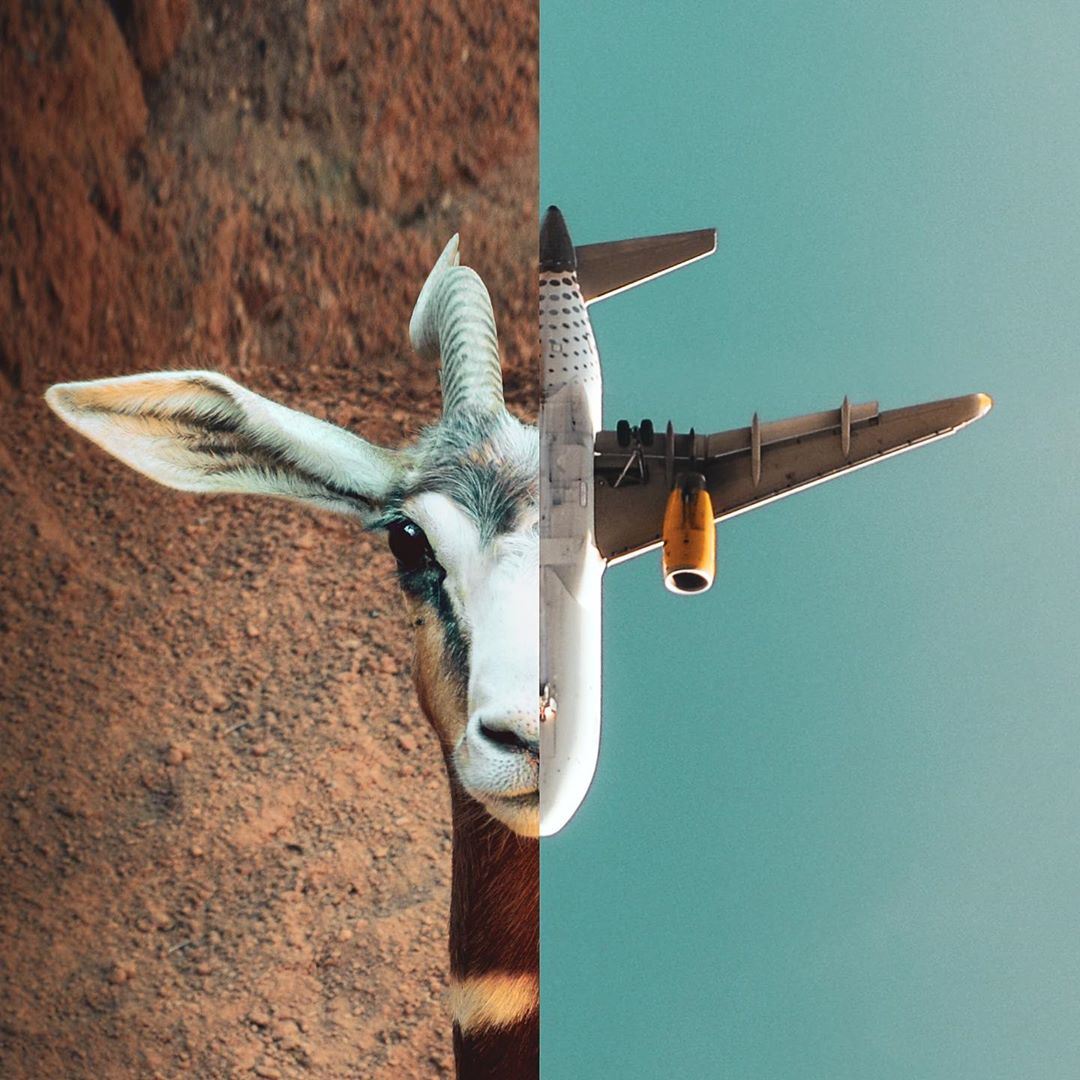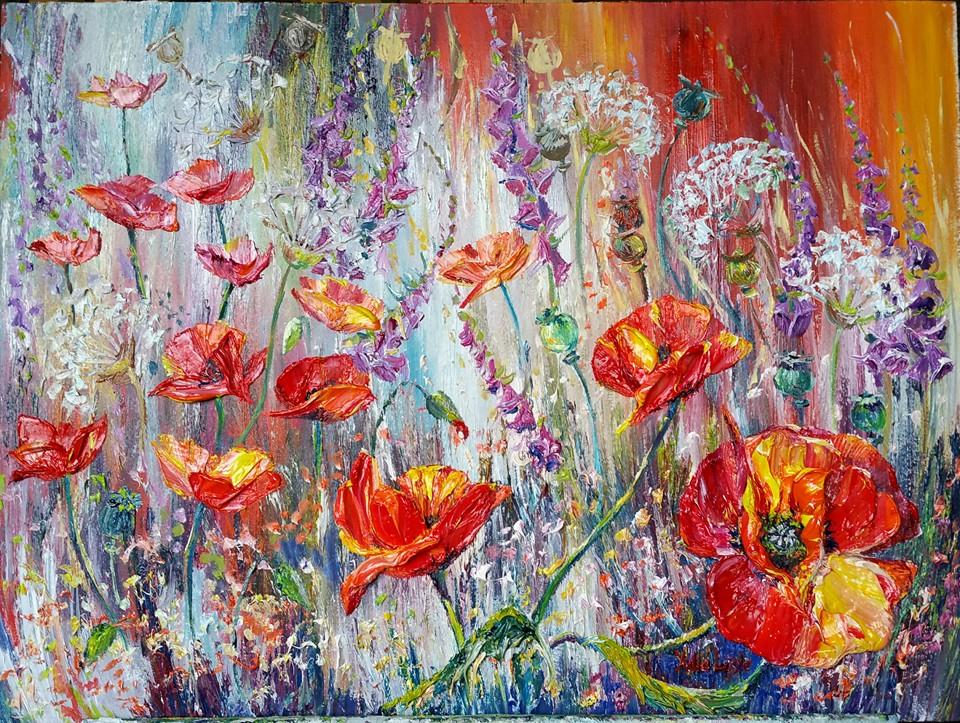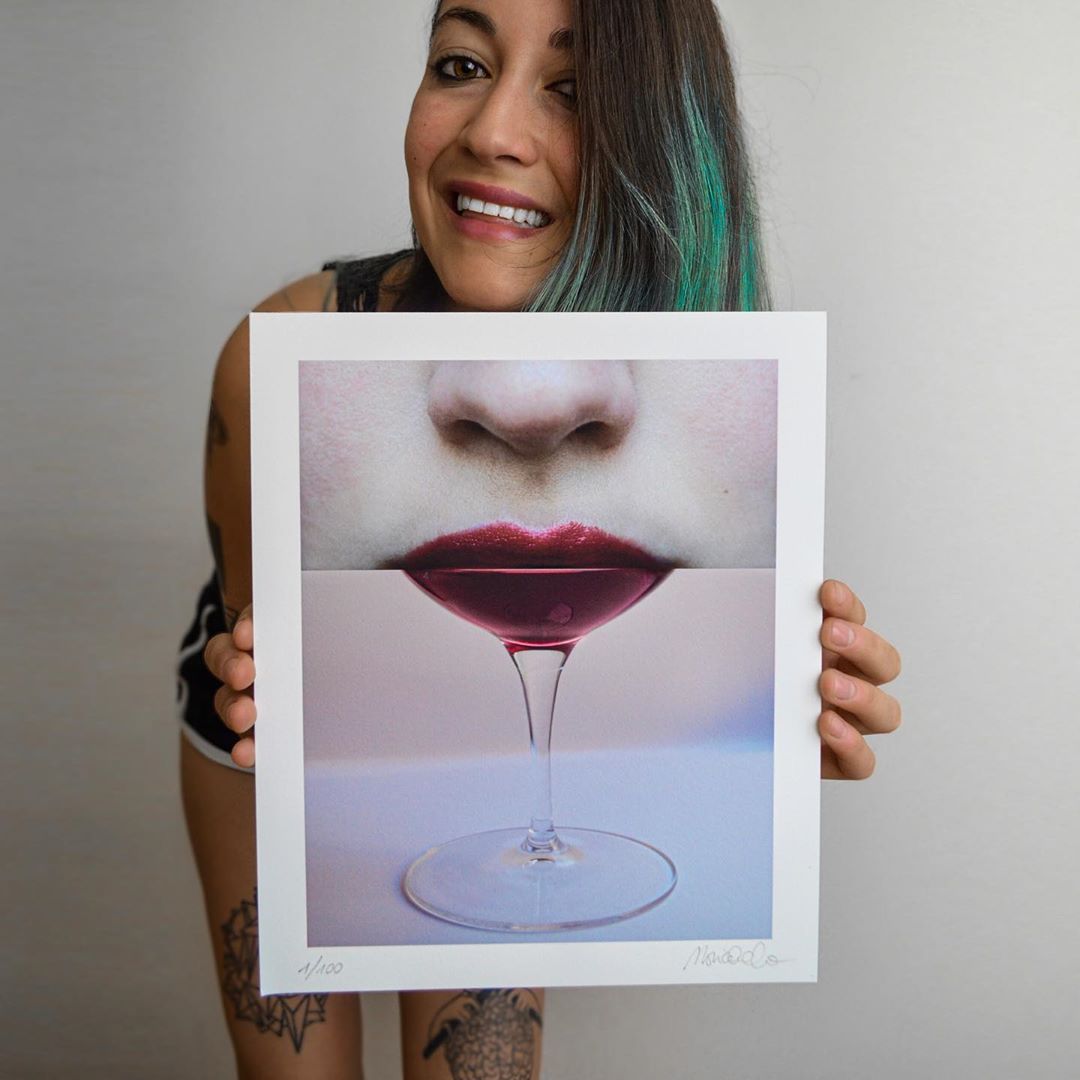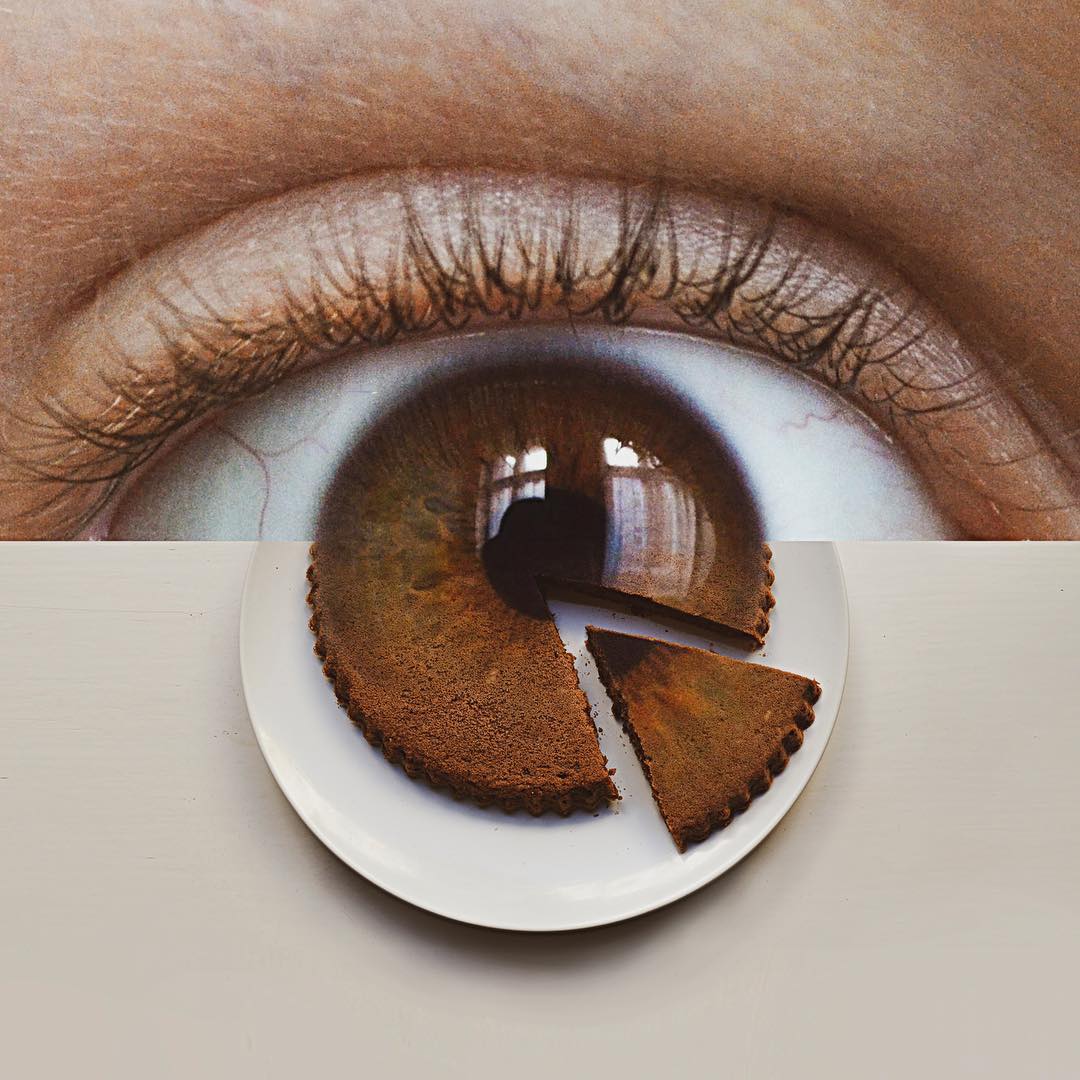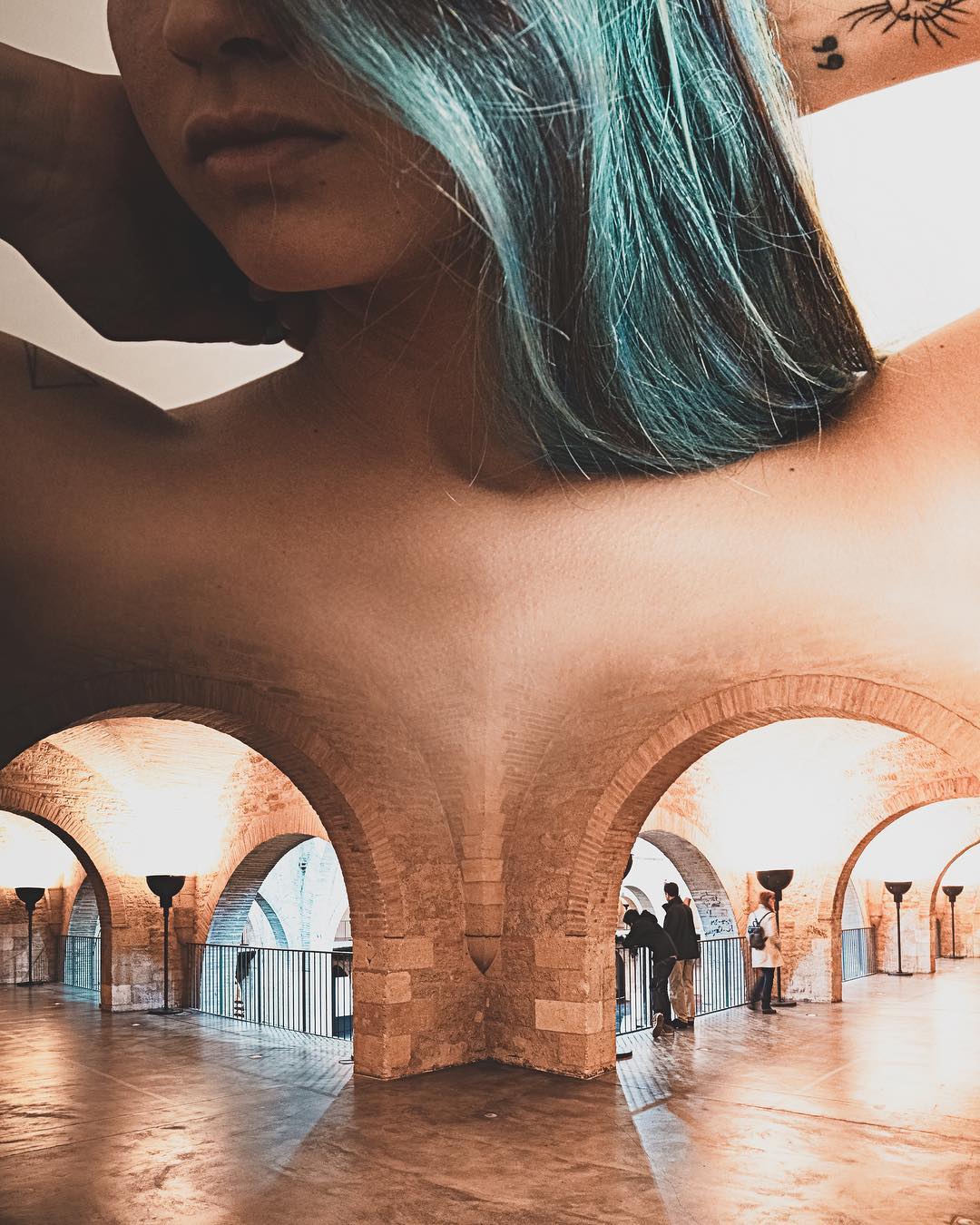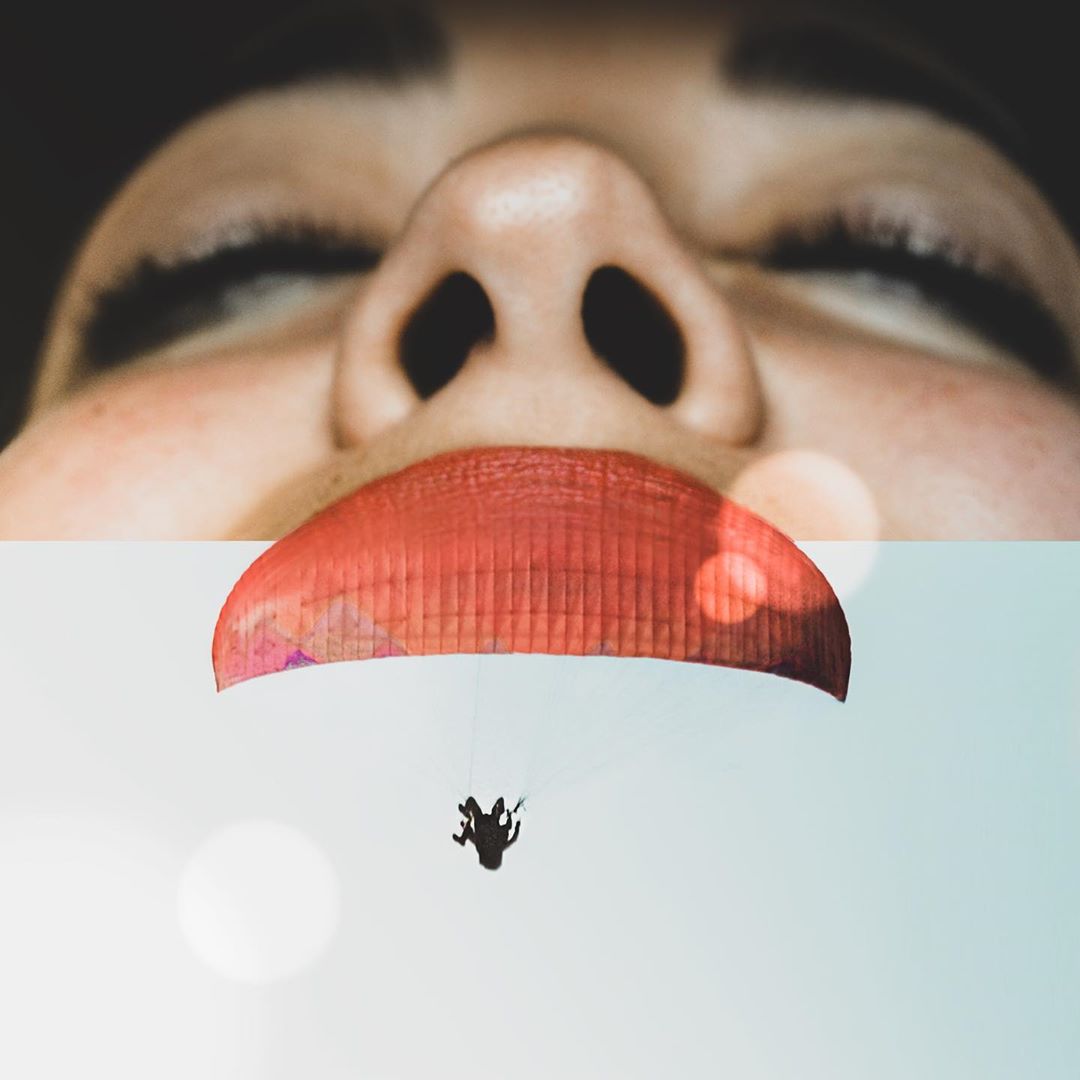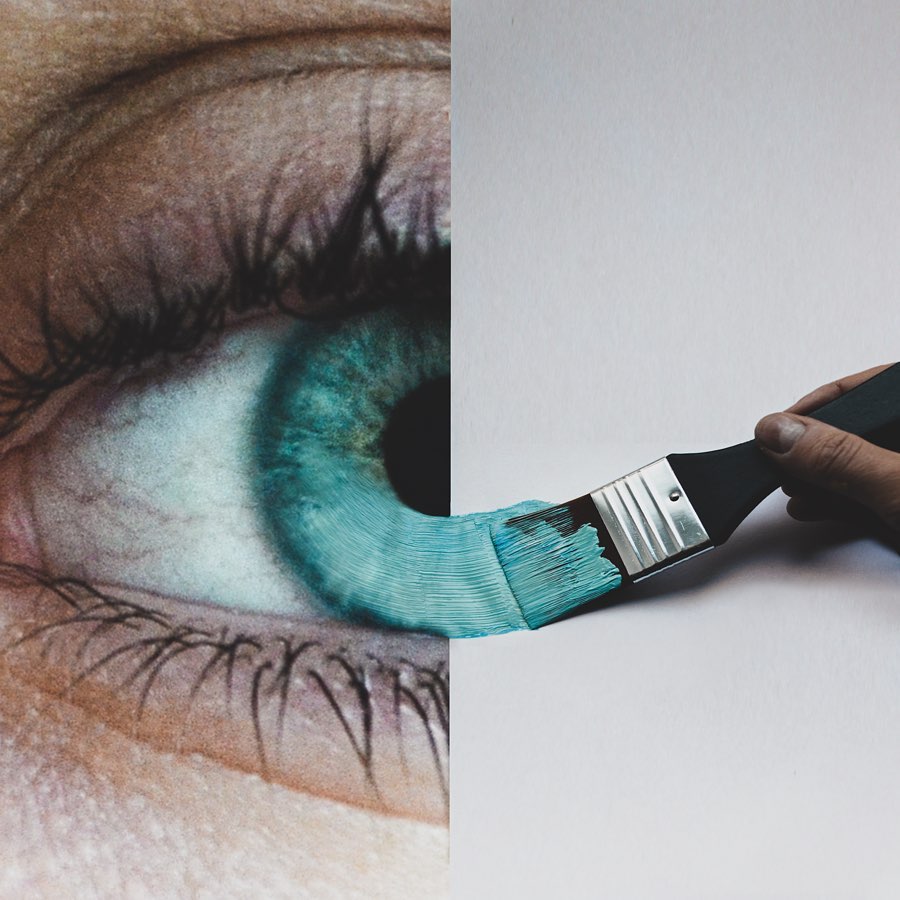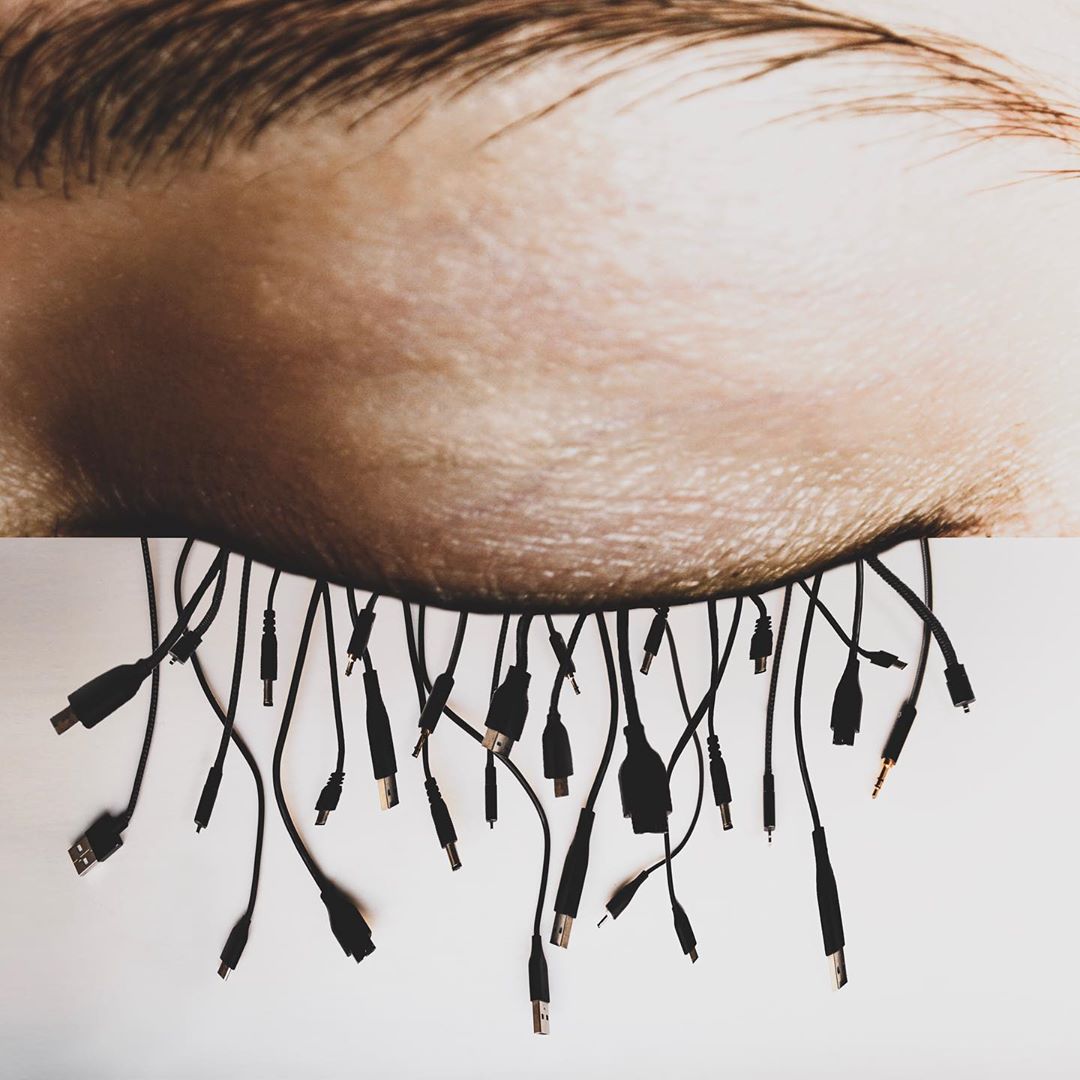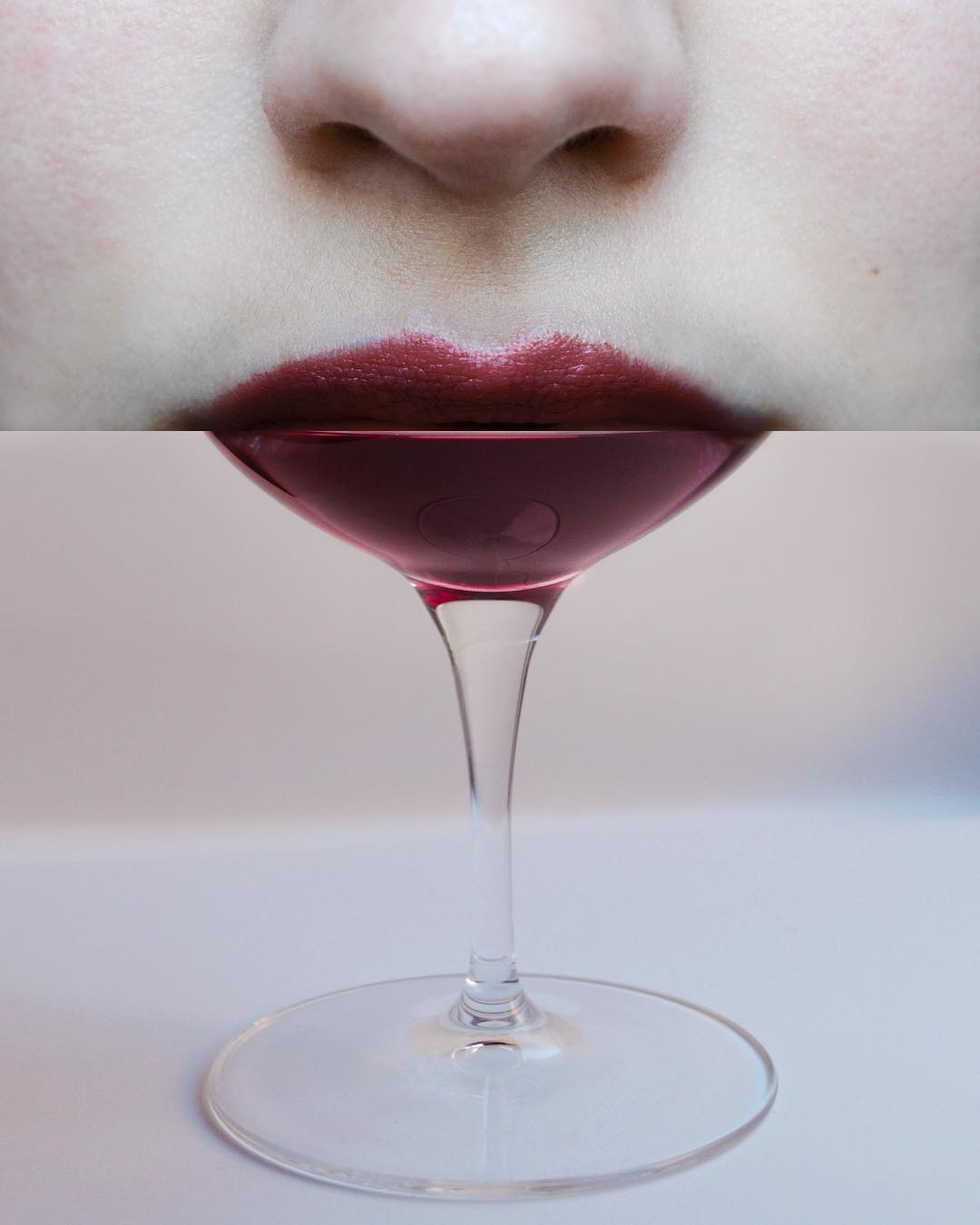Monica Carvalho is a Swiss-born photographer & digital artist based in Berlin. Her passion is to look at the familiar objects from a new perspective and create surreal images that make you look twice. Her motto is simple: “to make the ordinary extraordinary”!
xxx
G: What inspired you to start your project and why did you want to share it with the world?
M: Art has given me a voice, it has provided the medium with which I want to express myself in this world. Specifically, that medium was a digital camera received when I was a kid (then later a DSLR camera in my teens). Over the years, I developed a strong passion for photography. I loved documenting my family travels, the architecture of cities, the food we’d eat, the animals we’d encounter – anything, really. My photos enabled me to live these memories and happy moments again. But after being visually challenged by surreal artists such as René Magritte and Chema Madoz in college, I realised the possibilities that photography offered for playing around and inventing stories. I yearned for something more than just take photos: whatever I was going to create had to be challenging for the eyes. Therefore, I sought a way to combine my two existing passions – photography and surrealism, and the solution became Adobe Photoshop. Photoshop allowed me to merge my photos with my imagination. And Instagram was the perfect platform to share surreal compositions with the world and get feedback.
G: What was your breakthrough moment and how long did you work for it?
M: My art is digital, so I am very lucky to be living at a time where digital technology and social media are booming. Instagram has been an awesome platform to share my work, get exposure and feedback. My breakthrough moment was when I realised that my art – initially just a hobby – had the potential to turn into a career. This was the first photomontage that received considerably more engagement and shares.
G: How did you get there?
M: Patience and perseverance. I love being an artist, because it means working for me. I am my own boss :). I’ve worked in offices in the past and, although I did learn a lot, it felt unnatural, forced. I felt stripped of my creativity and self. When I left my last 9 to 5 office job, it immediately freed a huge chunk of my schedule and I had significantly more time to create new photomontages. In the space of 6 months, I created more artworks than in the previous 5 years, gained 50k new followers, got verified on Instagram, exhibited my work seven times, had my work featured on TV, spoke at a design conference and collaborated with several well-established brands. All these amazing opportunities would never have happened if most of my day was being dedicated to work for a company. Making art is what makes me happy, and the fact that so many people appreciate my art makes me even happier! My photomontages are my weapons of creativity, my voice in this world.
G: What was your most viral post so far? Did you expect it to be so popular?
M: I did not expect this photomontage to get such an amount of praise and engagement. I love using eyes in my work, because to me they are the most expressive part of the human body. Maybe this work was popular because it’s fair to say that most people love food (especially chocolate…), and the big brown eye makes direct eye contact with the viewers.
G: Have you noticed any patterns or can you tell which work will be quite popular before you share it with the world? Is the work that you consider to be your best work is the most shared/liked as well?
M: I believe that photomontages containing body parts are perhaps slightly more popular. Sometimes, a work I really like doesn’t get the amount of engagement I expected, and vice versa. Other times, the “double-take” factor is not so obvious. People scrolling fast through their feed might miss the point. My work can be a bit demanding… it asks you to look twice to grasp it! :)
G: How did you build the relationships with your community? What do you feel is most important to your community?
M: I love how Instagram has enabled me to join a community of artists, where we exchange feedback, thoughts, words of encouragement. I’ve discovered so many talented people, and to be constantly immersed in this level of creativity automatically makes you more creative, I think.
I believe it is important to engage with your audience, to reply to as many comments and messages as possible. It shows that there is a person behind the social media account. I want people to feel like they can reach out to me. Before being an artist, I am a human being like everybody else. That said, I rarely share content unrelated to my art. My social media posts and stories are solely dedicated to my art. As for the behind-the-scenes of my montages, I share them exclusively with patrons. I created a Patreon page last year in order to offer the chance to my followers to access extra content in exchange for a small monthly contribution. Patreon provides a more personal space to communicate with my fans. They can ask me anything about my art practice and I can get to know them as well.
G: What were the strangest interactions with your followers? What are the worst / best experiences?
M: Luckily, the interactions with my followers are mostly positive. I am particularly touched when art students reach out to ask if they may write university assignments about my work. I am extremely grateful to all the people sending me kind words on a daily basis, it encourages me to carry on creating when I lack motivation. When someone tells me that my work made them smile, it makes my day :)
As for negative experiences… well, apart from the obvious (people copying my work*), sometimes people ask me to send high quality files of my montages so that they can print them, as if my work is for free. There’s also those who repost my work without my permission and without crediting me, or who use my work to promote their business. The issue is that some people wrongly assume that if a work is posted online, it is automatically copyright free. Unfortunately, there’s a lack of education regarding intellectual property, and it can be very frustrating for digital artists. Some individuals don’t seem to realise how hard artists work and that it is a job like any other. One doesn’t go to a bakery, take a piece of bread and leave without paying… :)
*It is important to note the difference between “copying” (or “appropriating”) and “taking inspiration from”. The aim of my montages is to inspire people to look at the world around them differently. “Copying” is when someone (who call themselves “artist”) recreates one of my photomontages with other images (usually stock photos) and then writes in the caption “montage by XYZ, inspired by the work of Monica Carvalho”. I don’t inspire people to copy my concepts. I find it extremely disrespectful. Rather, my work is here to show people how familiar things – a pencil, a marshmallow, a shell and what have you – have the potential to acquire a new function. Finding new purposes for everyday objects is like granting them a superpower…
G: Do you get any negative comments from the fans? How do you deal with it?
M: I always welcome feedback on my work. If it is negative, then I prefer it to be constructive. Negative comments from people who aren’t artists themselves or who don’t know how to use Photoshop, are basically useless to me. This type of comment is merely posted out of jealousy (the famous “haters”).
Someone once told me that it was “too easy to just juxtapose two images together and call it done”. It saddens me, because they don’t seem to realise the amount of work I put into each photomontage. Yes, it is relatively easy to combine the photos on Photoshop. But that is not what’s challenging. The tough part is to widen your perspective and acquire the capacity to find atypical connections between unrelated objects. The tough part is to take all the photos yourself instead of using stock images. The tough part is to be unique and come up with unprecedented concepts. :)
G: At the early stages of your career, how did your work got noticed by people and the media? What’s your advice for upcoming artists, how to spread the word about their projects?
M: Prior to Instagram, my work was only known to family and close friends. Instagram was a significant catalyst in opening the doors to worldwide exposure. My advice is, if your art is of visual nature, then definitely post it on Instagram. Research the most effective hashtags for your type of art to increase discovery, and make sure you engage regularly with your audience. Because without an audience, is it art? If a tree falls in a forest and nobody’s around to hear it, does it make a sound? :)
G: Art and Money, don’t follow each other especially at the beginning, how did you finance yourself at the start of your artistic journey and how did you find sponsors later on?
M: At the beginning, I was doing my art simply as a pastime. I wasn’t taking it very seriously, it was just for fun. But as my photo-editing skills evolved and I decided to create an Instagram account to reach a wider audience that my family, my images gradually started gaining traction and I realised I could monetize this hobby. Brands like the fact that my work is quirky and pretty niche, as well as the extra effort I infuse it with by using photos from my own portfolio. I got my first commission, then another and another. I am very honoured and grateful to the people who see the value in my work and how it in turn brings value to their products and services.
G: There are so many art projects these days, how do you find your edge for the new projects?
M: If there is one thing I have learnt over the years, it is that there are no rules for where inspiration can be found. Clothes, people, food, architecture, nature, animals – anything has the power to inspire. I realised that, by shifting my way of looking at ordinary things, they could acquire a new meaning. One has to try and see beyond the main function of an object.
G: What 3 pieces of advice would you give to creatives looking to make it in the art world?
- Be patient with yourself. Your artistic pathway will be a series of stepping stones to ever greater success. You’re going to want to give up a lot of times, but you have to persevere.
- Do something unique. Try to see the world with your own eyes. There are so many people calling themselves “artists” out there who simply copy the work of other artists. I am aware that I’m not the only person doing photomontages, but the way I differentiate myself – other than with my composition ideas – is by using photos from my own portfolio. Most people use stock images. So yes, get inspired by other artists but strive to bring something fresh to the world. :)
- Do your art for yourself first, not for others. It’s your art, your personal expression. Also, don’t feel like your art has to have a certain meaning. Art has many purposes, including the simple one of bring pleasure to people. For instance, the aim of my work is to bring a little moment of fun and surprise to someone’s day, to offer that element of double-take, to fool people for one second. People can choose a million other interpretations for my work, but in the end, it really is just two unrelated things combined together on Photoshop because they happened to have one thing in common (same colour, texture, or shape). I create these montages because it brings me joy and challenges me. So yeah, make art because it makes you happy and challenges you. :)
G: What are your favourite projects that you have seen recently and who are you favourite artists/people that you follow regularly?
M: My favourite artists at the moment are @paperboyo, @vincent_bal, @drcuerda and @abstractsunday (who I had the lucky opportunity to meet in Berlin!). What all these insanely talented artists have in common is the optical illusion element. I am constantly fascinated by art that is challenging for the eyes, by art that makes you look differently at the world around you.
G: What’s the biggest risk that you’ve ever taken as an artist and how did it turn out?
M: The only thing that comes to my mind when I think about risk is perhaps posting photomontages with my intimate body parts. Instagram has some absurd content policy, like the one of banning images containing female nipples…
G: What are your future plans?
M: I have a few dream collaborations, so I’m crossing my fingers for them to come true one day :)
Social links:
Website: www.instagram.com/mofart_photomontages
Prints: www.inprnt.com/gallery/mofart
Patreon: www.patreon.com/mofart_photomontages


